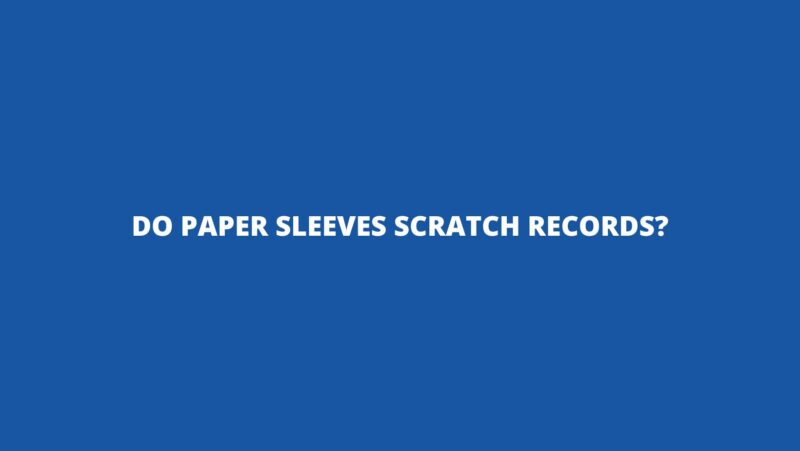Vinyl records have charmed generations with their unique sound quality and nostalgic appeal. As vinyl enthusiasts invest in the care and preservation of their collections, questions often arise about the potential impact of paper sleeves on the condition of records. Among these concerns, the question of whether paper sleeves scratch records is a crucial topic that demands clarity and exploration. In this article, we will delve into the intricacies of this question, examining the mechanisms at play, expert insights, potential benefits and challenges of using paper sleeves, and practical guidelines for maintaining the integrity of your cherished vinyl collection.
The Nature of Paper Sleeves
- Material Composition: Paper sleeves are typically constructed from acid-free and archival-quality paper, which is designed to prevent chemical reactions that could harm the vinyl. They offer a cushioning effect that minimizes friction and contact with the vinyl surface.
- Caring for Collectible Records: Collectors often use paper sleeves for collectible or valuable records, as they are considered gentler on the vinyl and labels compared to some plastic alternatives.
Understanding the Risk of Scratching
- Friction and Abrasion: The concern of whether paper sleeves can scratch records is rooted in the potential for friction and abrasion. If records are mishandled or inserted roughly into the sleeves, there is a possibility of surface damage.
- Quality Matters: The likelihood of scratching largely depends on the quality of the paper sleeve. Well-made, acid-free sleeves with smooth surfaces reduce the risk of scratching.
Expert Insights: Finding the Balance
- Vinyl Preservation Experts: Preservation experts stress the importance of using quality paper sleeves that fit properly and are handled with care. They also recommend inspecting sleeves regularly to ensure they remain in good condition.
- Vinyl Collectors: Experienced collectors emphasize that proper handling techniques, such as gently inserting records into sleeves, are vital in preventing scratches. They also highlight the role of inner sleeves in protecting records.
Benefits of Using Paper Sleeves
- Label Protection: Paper sleeves prevent direct contact between the vinyl and the label, preserving the artwork and information on the label.
- Minimal Static Buildup: High-quality paper sleeves are designed to minimize static, reducing the attraction of dust and debris to the vinyl surface.
- Gentle Cushioning: The cushioning effect of paper sleeves provides a gentle buffer that can help prevent abrasion or scuffing when records are inserted or removed.
Addressing Common Concerns
- Proper Handling: The risk of scratching is often associated with improper handling. Gentle insertion and removal of records from sleeves, coupled with clean hands, can significantly mitigate this risk.
- Regular Inspection: Regularly inspect paper sleeves for any signs of wear, damage, or debris. Replace worn or damaged sleeves promptly to maintain protection.
- Complementary Use with Outer Sleeves: Some collectors opt to use outer plastic sleeves in combination with paper sleeves, providing an extra layer of protection against dust and potential surface contact.
Conclusion
The question of whether paper sleeves scratch records invites a nuanced exploration of the various factors at play. While the risk of scratching is present, it is largely contingent on the quality of the paper sleeve, as well as the care with which records are handled. By selecting high-quality, acid-free paper sleeves, employing proper handling techniques, and inspecting sleeves regularly, collectors can minimize the potential for scratching while enjoying the benefits of label protection and gentle cushioning.
As you curate and care for your vinyl collection, remember that the use of paper sleeves is a practice that aligns with the preservation of the artistry and sentiment that vinyl records embody. It is a testament to the dedication of collectors to ensure that the melodies and memories encapsulated within the grooves are safeguarded for both the present and future generations of music enthusiasts.

